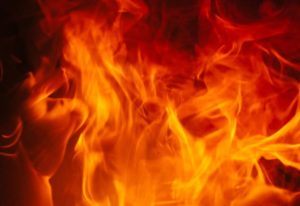
Here is how you should handle different kinds of fires.
Whenever fires start, they are able to spread at a rapid rate. All fires are different, and they come with varying risks. Since every fire is different, you’ll need a different fire extinguisher to handle each one. There are multiple kinds of fires that exist, and you need to take a different approach with each one. Here is how you should handle different kinds of fires.
Class A
Class A fires have solids involved. The fire could be fueled by various office materials, like paper or furniture, among other things. Sometimes, the building’s structure can be the catalyst.
These fires are among the most common because of how common solid fuel sources are and how difficult it is to keep these fire sources to a minimum around a building.
Only Class A extinguishers should be used to put a Class A fire out because those extinguishers are designed to handle most fires that are caused by solids. Just don’t keep these extinguishers near electrical gear.
Class B
A fire in the Class B category will involve liquids. There are quite a few flammable liquids that can cause a fire, such as paints, fuels, and cleaning fluids. While these fires aren’t as common, they have high fatality rates whenever they do arise, so you need to ensure that one doesn’t have a chance to start. This means storing any flammable liquids properly, so they aren’t near ignition sources.
If a Class B fire breaks out, powder or foam fire extinguishers should be used to handle the job.
Class C
Class C covers any fire involving gases. Stored gases must be kept inside of sealed containers and placed in a storage space that is safely away from flammable objects.
Unlike with other fires, a Class C fire should not be handled with an extinguisher. Instead, the best approach is to turn off the gas to deprive the fire of a fuel source.
Class D
A fire in the Class D category is caused by metals. There aren’t many combustible metals, but they do exist, such as sodium. In addition, metals are powerful conductors, which means they can make a fire spread more easily. Metals also melt and become soft when they’re at higher temperatures, which can cause safety concerns when metal structures are integral components of a building’s structure. Use a dry powder fire extinguisher to put out a Class D fire.
KEEP YOURSELF SAFE WITH ANDERSON FIRE PROTECTION, INC.
Anderson Fire Protection, Inc. has the expertise and skill to help your home or commercial property for all your fire protection needs. We have been working in the Maryland, Northern Virginia, Southern Pennsylvania, and Washington, D.C. areas for over 25 years. We are known for our top-notch customer service and high-quality results. If you are ready for fantastic fire prevention and protection services, from fire sprinkler installation to fire alarm design and to consult, give us a call at (410) 796-4915 or visit us online.
